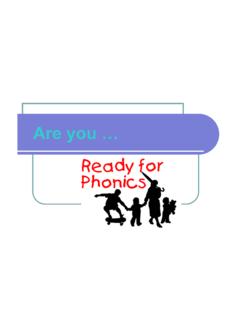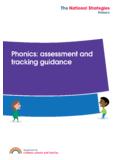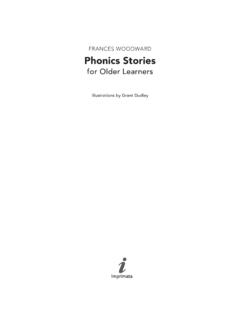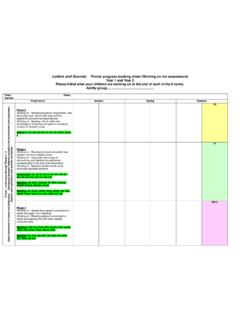Transcription of Letters and Sounds - potteries-school.s3.amazonaws.com
1 Letters and Sounds We are following Government guidance with regards to 6 phases of phonics teaching. This six phase teaching programme focuses on high quality phonic work. The Intention is to ..equip children who are 5 with the phonic knowledge and skills they need to become fluent readers by the age of 7. By the end of Year Two children should have completed phase 6. Which phase your child should be working on is assessed by the teacher, and appropriate teaching is planned for. Below is information about the 6 phases , and the progression between them. letter and Sounds Phase1 Children explore and experiment with Sounds , Differentiate between Sounds and become familiar with rhyme, rhythm and alliteration(from birth to the end of Nursery) This Phase continues throughout their Primary Education Stages of Phonological Awareness Within Phase1 there are SEVEN ASPECTS: Environmental sound Instrumental Sounds Body percussion Rhythm and rhyme Alliteration Voice Sounds Oral blending and segmenting Phase2 To introduce grapheme/phoneme ( letter / sound ) correspondence (beginning of Reception) Children know that words are constructed from phonemes and that phonemes are represented by graphemes.
2 They have a knowledge of a small selection of common consonants and vowels (which usually begin with s,a,t,p,i,n) and begin to put them together to read and spell CVC words Phase3 To teach children one grapheme for each of the 44 phonemes in order to read and spell simple regular words. (Reception) Children link Sounds to Letters , naming and sounding the Letters of the alphabet. They hear and say Sounds in the order they occur in the word and read simple words by blending the phonemes from left to right. They recognize common digraphs ( ) and read some high frequency words. Phase4 To teach children to read and spell words containing adjacent consonants (end of Reception) Children will be able to blend and segment adjacent consonants in words and apply this skill when reading and spelling. Children will move from CVC words (pot, sheep) to CVCC words (pots) and CCVC words (spot) and then CCVCC words (spots) (end of Reception) Phase5 Teaching children to recognize and use alternative ways of pronouncing the graphemes and spelling the phonemes already taught.
3 (Year One) Children will use alternative ways of pronouncing the graphemes ( the c in coat and city). Recognise an increasing number of high frequency words automatically. Knowledge and skills of phonics will be the prime approach to reading and spelling. Phase 6 Teaching children to develop their skill and Teaching children to develop their skill and automaticity in reading and spelling, creating ever increasing capacity to attend to reading for meaning. (Year Two) Applying phonic knowledge to recognise and spell an increasing number of complex words. Read an increasing number of high and medium frequency words independently and automatically Your Child s class teacher will be able to inform you which stage they are working on. But remember to also ask your children what phonemes ( Sounds ) they have been doing each day in class!
4









